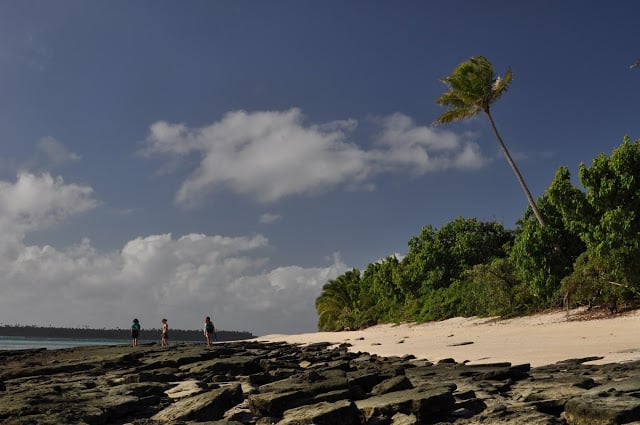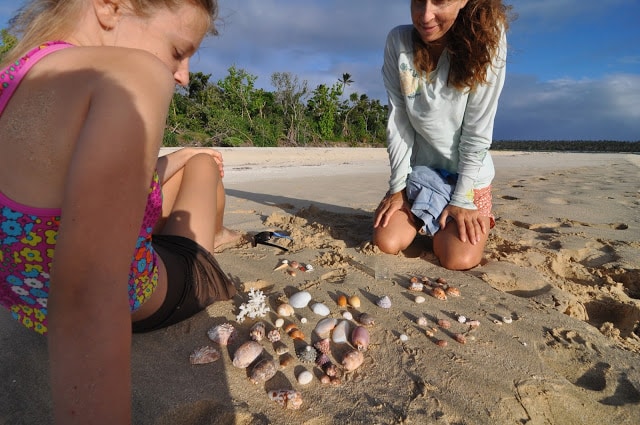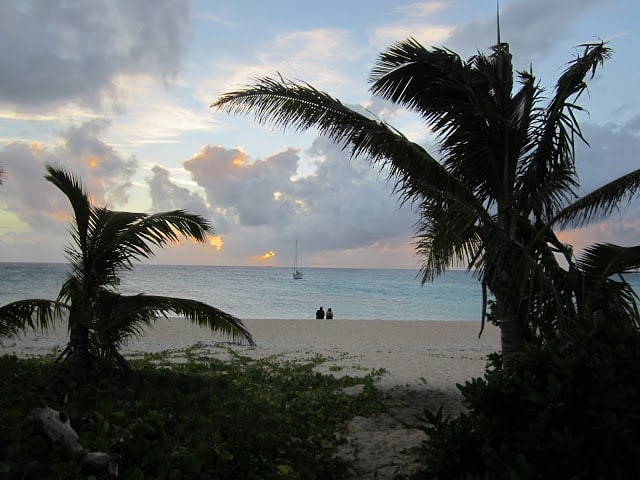
There are few ways of living that focus a person’s attention on resource consumption as sharply as cruising. Our boat is a very small island. At sea or at anchor, we are not connected to any inexhaustible supply of power or fresh water. Our power trickles in by sunlight. We collect rainwater or bring water aboard from shore in 5-gallon jerry cans. Our capacity to store either of these primary resources is finite. Accordingly, aboard Del Viento we consume power and water in a manner that would make any Earth Day activist seem profligate in comparison.
“Mom, can we watch that ‘Project Runway’ DVD after dinner?”
“Uh, no. The laptop battery is low and I don’t want to turn on the inverter—it was just too cloudy today.”
“Okay.”
“Whose turn is it to do dishes tonight?”
“Mine”
“Okay, be sure to use salt water for washing and just spritz with the fresh, okay? It’s supposed to rain later this week and then we’ll fill the tanks.”
For all the time we spent cruising between Mexico and Alaska, we lived differently than the populations ashore. That’s to be expected; our land-based friends couldn’t function the way we do, and why would they want to? But when we sailed to the South Pacific, we found people living on their own small islands, bigger than the island of Del Viento, but with similar resource constraints. Power often dribbled in from solar panels and small, community generators. On many islands, every home and business captured rainwater from rooftops and diverted it to cisterns. At least the latter was the case until we arrived at American Samoa.

I’ve roamed far from the port town of Pago Pago and I’ve yet to see a single structure with a rainwater collection system. The failure to capture rainwater on this island reaches a level of absurdity that rivals Heller’s descriptions of war in Catch-22.
There is a mountain on this island nicknamed The Rainmaker and in fact, the port of Pago Pago receives more annual rainfall than any port on Earth. There is a government works department (American Samoa Power Authority, or ASPA) that drills and drills and drills water wells on the island. They don’t stop because much of the water they tap is immediately contaminated with sewage (from broken underground sewer pipes) or salt. They also don’t stop because the underground water main pipes leak so badly, and increasingly, that more wells are needed to make up for the water that is lost. Because the cost of digging up and repairing the main pipes is prohibitive, it’s cheaper to keep drilling. And after all this, the water that’s piped to homes is not safe to drink. 60,000 residents buy drinking water in plastic bottles or fill containers at machines that vend purified water.
All this while rain keeps falling from the sky.
But there’s more!
Residents are billed monthly in a way that encourages consumption. They pay a flat fee and then just pennies for usage. The monthly bill for a household that uses 1,000 gallons is only slightly lower than that for a household that uses 5,000 gallons.
Why is this island so different than its neighbors?
I’m sad to report that it’s the American way. When we colonized this place in the early 1900s, we sent our best engineers here to create the infrastructure that is the norm for folks on the continent. This ain’t the continent.
And maybe there is a lesson here.
After all, the continent ain’t homogenous. Perhaps what works on the East Coast of the U.S. should not have been mimicked on the West Coast.

In my Southern California hood there is a drought, a significant and prolonged one. There’s been much talk about the recent El Nino event and the rain it delivered and the snow it deposited, but that’s no salvation, it’s just a drop in the proverbial bucket. Southern California’s had a water crisis for a long time. I remember in the late 70s going to restaurants with my family and being served water only if we asked. This was then a new thing and saved not just the water in the glass, but the water necessary to wash that glass, as the widely-broadcast public service announcements of the time taught us all. And we put bricks in our toilet tanks, began watering the lawn after sundown, and stopped hosing off the driveway.
And here we are in the teens, now in the 21st century, and the ever-growing Los Angeles megalopolis is still a massive concrete basin that efficiently routes all rainwater down storm drains and into the ocean. Rain barrels are still a quaint novelty. Central valley aquafers are being pumped dry as though they are a sustainable resource.
From my little cruising boat island, it all seems out of whack.
I recently read a New York Times story about water usage in California, particularly about how fines imposed by water districts to promote conservation were ineffective. The lead paragraph caught my attention. It described the water consumption of a conservation-minded household in Apple Valley, so that it could be contrasted with a Bel Air residence with 2 pools, a waterslide, and 12 bathrooms.
“Outside her two-story tract home in this working-class town, Debbie Alberts, a part-time food service worker, has torn out most of the lawn. She has given up daily showers and cut her family’s water use nearly in half, to just 178 gallons per person each day.”

Stop right there.
“…178 gallons per person each day.”
Per person, I’ll give her 8 gallons per day for toilet flushing, another 10 for a shower, a gallon for drinking, 4 gallons for dish washing and food prep, 10 for laundry. I’ve probably left stuff out, but that’s only 33 gallons. So I’ll give her 75 gallons per day, per person; that seems generous if she’s ripping out her lawn and trying to conserve. And yet her family uses more than twice that. And they’re in conservation mode, previously using at least 300 gallons per person, per day.
Does this make sense?
Maybe to Yossarian, not to this cruiser.








